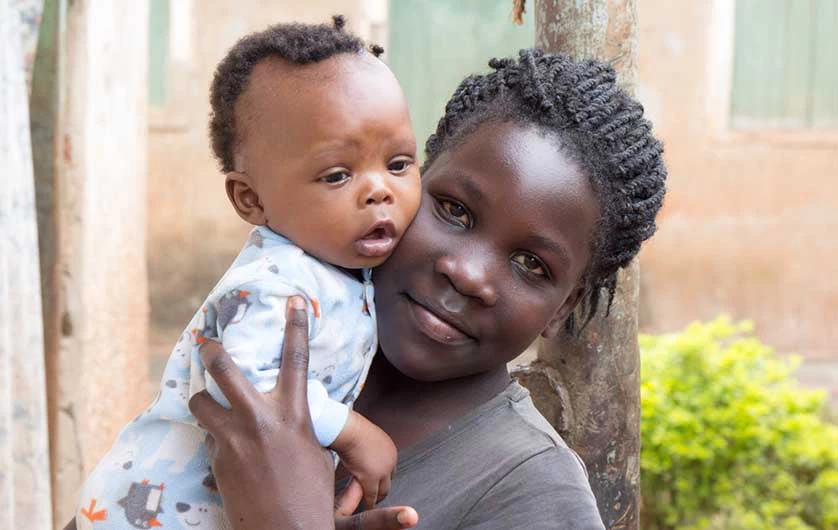
This blog is based on new child mortality and stillbirth estimates released today by the United Nations Inter-agency Group for Child Mortality Estimation (UN IGME).
Data available as of October 2022 shows a relatively small direct mortality impact of COVID-19 on child mortality. However, further assessments when more data is available would be needed to validate these findings. At the same time, the indirect impacts of the pandemic, such as disruptions to certain interventions like vaccination or nutrition can have a disproportionate toll on children between 1 and 59 months old. Children in this age group tend to be more susceptible to infectious disease as a cause of death relative to newborns (less than 1 month).
Children continue to face widely differing chances of survival based on where they are born
Children in Sub-Saharan Africa and South Asia continue to face the highest risk of death in the world and to bear the brunt of the child mortality burden. These two regions account for more than 80% of global under-five deaths. Children born in Sub-Saharan Africa are subject to the highest risk of childhood death in the world with an under-five mortality rate of 73 deaths per 1,000 live birth – 10 to 12 times higher than the risk for children in Europe and North America.
The Sustainable Development Goals (SDGs) call for all countries to reach an under-five mortality rate of 25 or fewer deaths per 1,000 live births by 2030. If current trends continue, 54 countries will not meet the SDG target for under-five mortality. Forty of the 54 countries that are off track to meet the SDG target are in Sub-Saharan Africa, 47 are classified as low- or lower-middle-income countries and 25 are classified as fragile and conflict-affected situations.
Even more countries are at risk of missing the SDG target for neonatal mortality, which is 12 deaths or fewer per 1,000 live births by 2030. More than 60 countries will need to accelerate progress to meet the neonatal mortality target by 2030.
The Levels & Trends in Child Mortality 2022 report calls for action and attention to the most vulnerable regions, countries, and children, such as sharpened focus and expanded investment in life-saving interventions that have reduced mortality rates up to now. It will require strengthening and investing in primary health care to improve the coverage and equity of care in delivering high-quality and high-impact maternal, newborn, and child survival interventions.
The stillbirth rate is declining more slowly than under-five mortality rates
The United Nations Interagency Group for Child Mortality Estimation (UN IGME) also released its second round of global stillbirth estimates today.
According to the new report: Never Forgotten, The situation of stillbirth around the globe, 1.9 million babies were stillborn globally in 2021, after a slow decline from 2.9 million since 2000.
This is in addition to the 2.3 million neonatal deaths in 2021. Roughly two in five of stillbirths occur during labor and most of these are preventable.
The stillbirth rate is declining more slowly than under-five mortality rates, so that stillbirths account for an increasing share of total stillbirths and under-five deaths
Between 2000 and 2021, the stillbirth rate declined by 35%, while the under-five mortality rate declined by 50%.
Almost 8 in 10 (79%) of global stillbirths occur in Sub-Saharan Africa and South Asia, while many stillbirths are preventable with access to quality care before and during childbirth.
The report emphasizes that stillbirth remains nearly invisible although the scale of these deaths continues to be enormous. The World Bank and the Global Financing Facility (GFF) have been supporting countries to build primary healthcare systems that meet the needs of women, children, and adolescents, with a concerted effort to reduce preventable deaths.
From providing assisted birth facilities and pre- and postnatal care, to administering childhood vaccinations, nutrition services, and access to family planning, healthy lives depend on person-centered primary health care that can be delivered in communities.
These mortality estimates were produced by the UN IGME. The UN IGME includes UNICEF, the World Health Organization, the World Bank Group, and the United Nations Population Division as full members. The group was formed in 2004 to share data on mortality, harmonize estimates within the UN system, improve methods for child mortality estimation, and to report on progress towards the MDGs. The group continues to produce reliable and transparent mortality estimates to track countries’ progress towards SDG target 3.2. All data, estimates, and details on methods are available on the Child Mortality Estimates website. The new estimates will become also available in the World Bank’s World Development Indicators and Health databases.



Join the Conversation